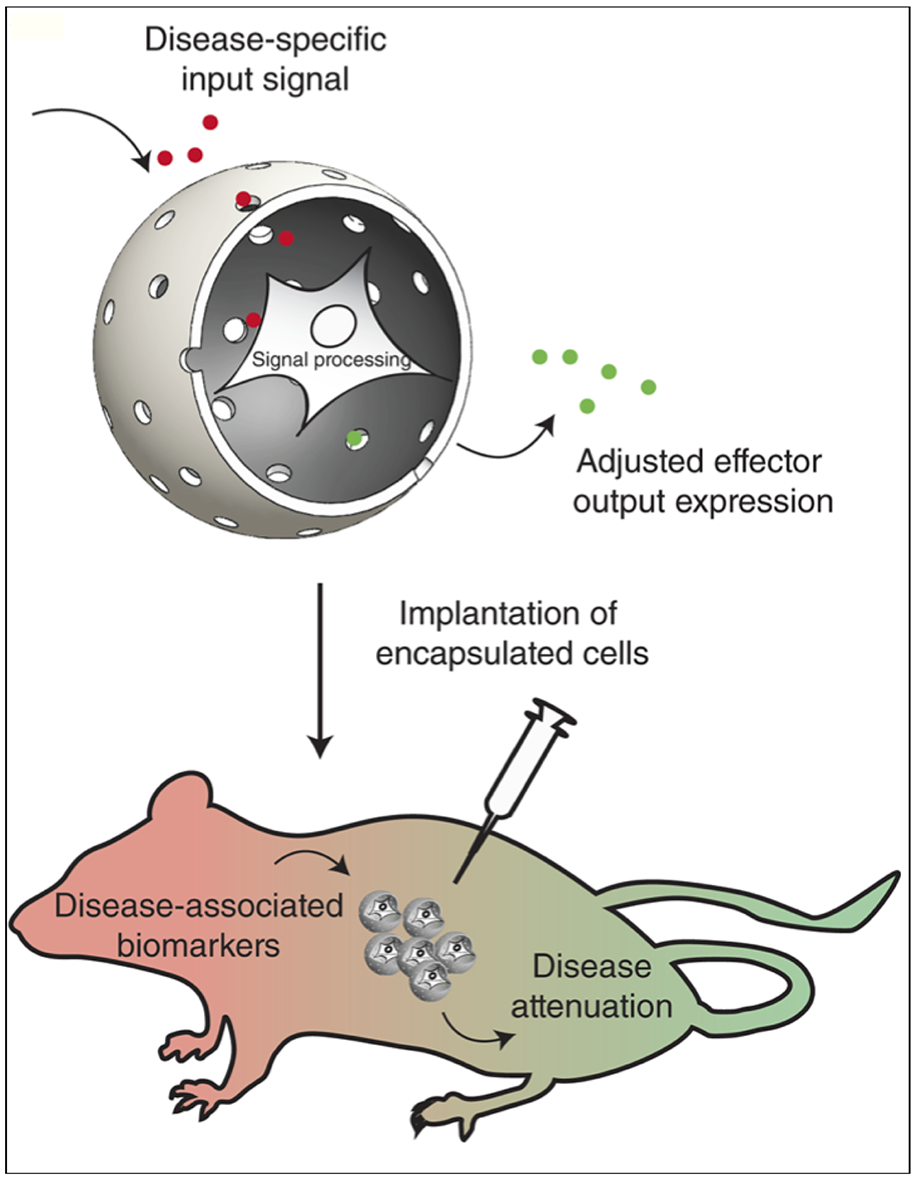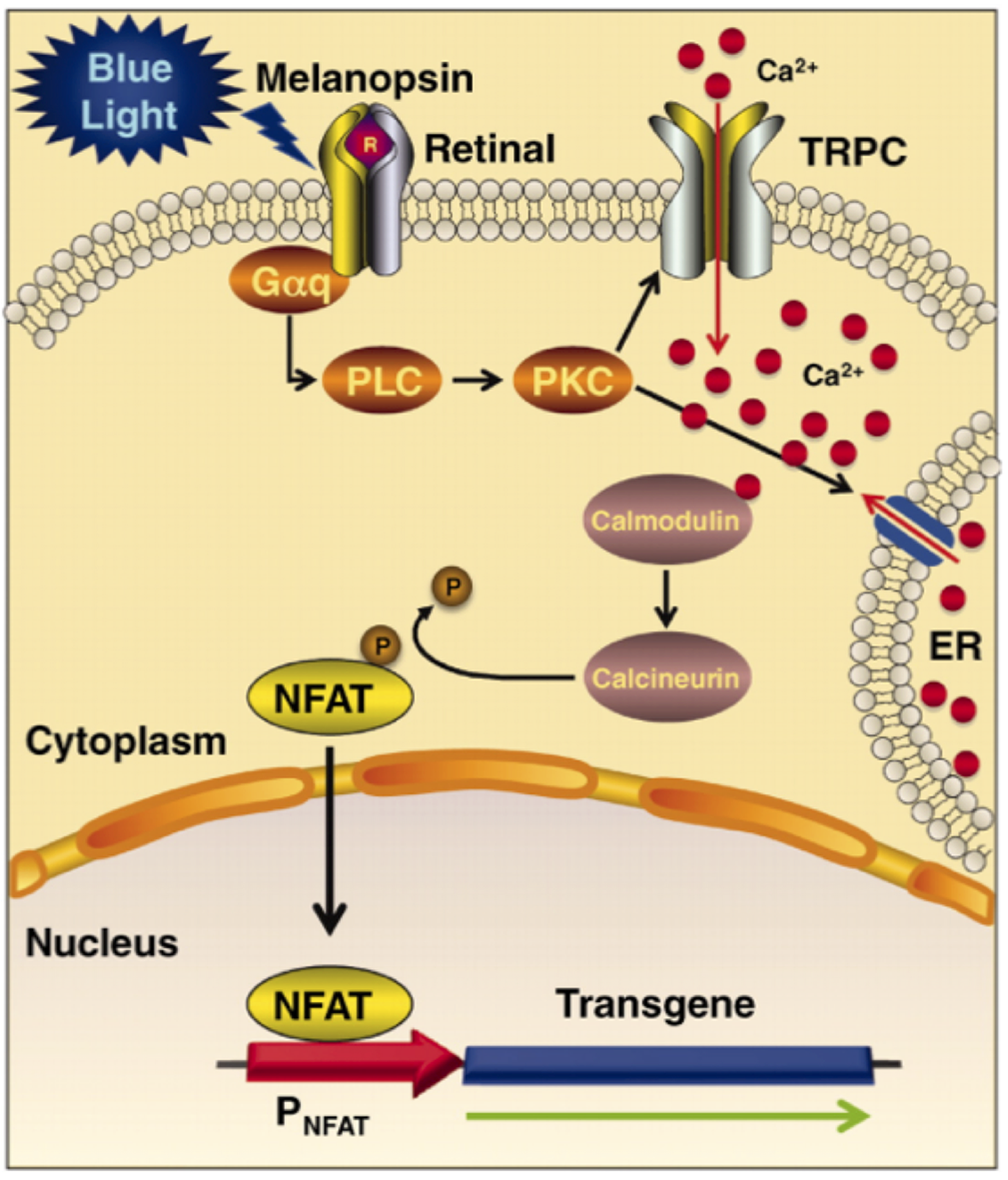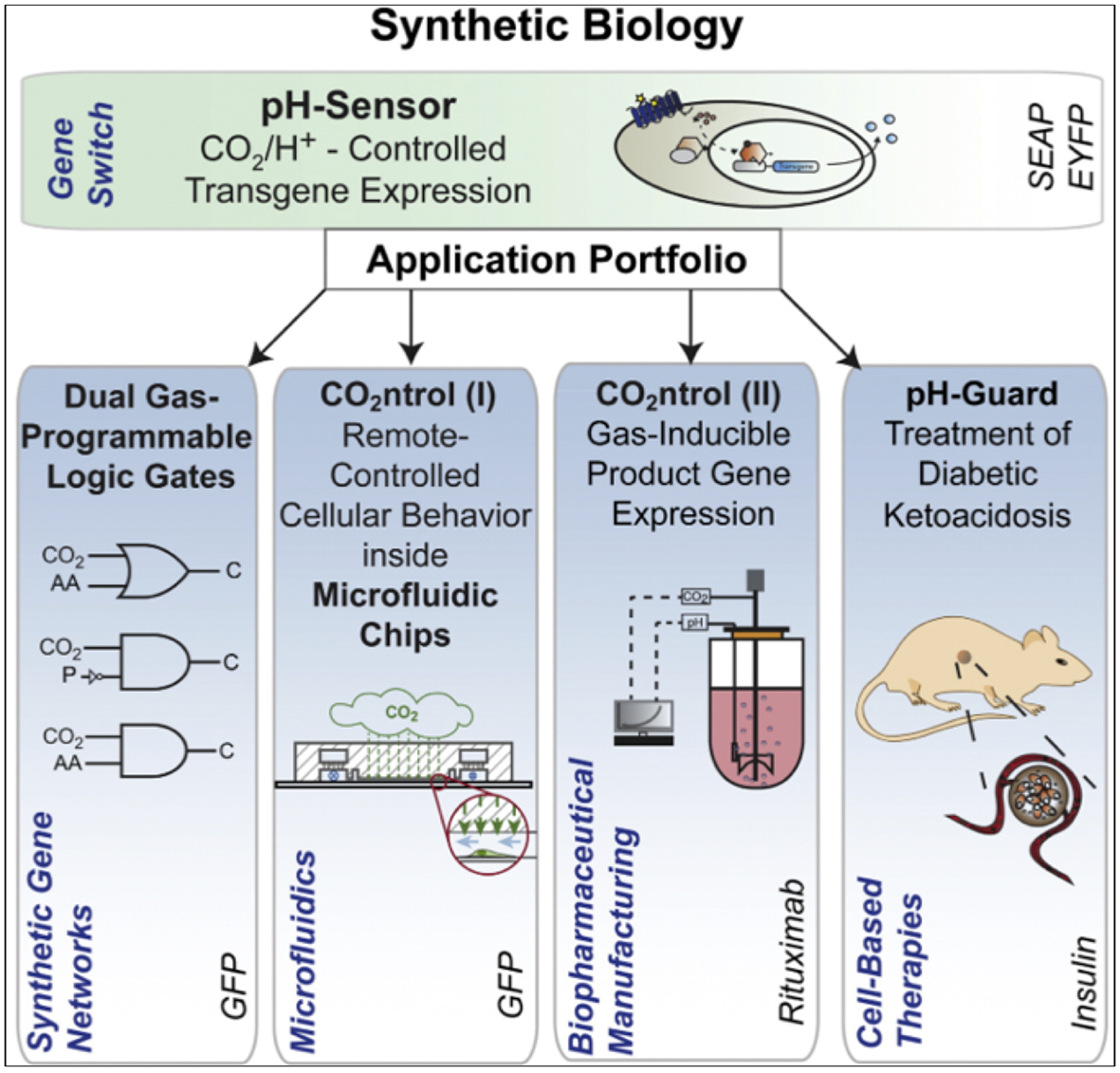Martin Fussenegger's Biotechnology and Bioengineering Research Group
Synthetic Biology: From Biotechnology to Human Therapy
Human diseases originate from spontaneous, environmentally-triggered or pathogen-induced perturbations of endogenous expression or signaling networks, and often result in disabling or fatal pathologies. Beyond administration of small-molecule drugs or biopharmaceuticals, currently available treatment concepts include reprogramming of genetic deficiencies using gene-transfer technologies, and implantation of engineered cells or tissues. Focusing on engineering of mammalian cells using synthetic biology principles we are designing the treatment strategies of the future.
Synthetic Receptors for Programmable i/o Relationships
We are creating synthetic receptors with adaptable ligand-binding domains to sense relevant soluble or surface-bound antigens. This can be combined with appropriate response modules to control expression of endogenous or exogenous genes.
Selected publications:
Scheller et al., 2018, external page Nat. Chem. Biol. 14: 723
Kojima et al., 2018, external page Nat. Chem. Biol. 14: 42
In the press:
external page The Scientist
Immuno-mimmetic Cells
We are genetically engineering easy-to-use non-immune cells with synthetic gene circuits so that they can mimic and boost immune cell function in the treatment of infection or cancer.
Selected publications:
Liu et al., 2018, external page Cell 174: 259
Kojima et al., 2018, external page Nat. Chem. Biol. 14: 42
In the press:
external page Neue Zürcher Zeitung, 20 Minuten, external page The Scientist
Synthetic Gene Switches
We keep increasing the collection of novel trigger-inducible transgene expression systems for precise dosing of in-situ production of protein therapeutics.
Selected publications:
Wang et al., 2018, external page Nat. Biomed. Eng. 2: 114
Bojar et al., 2018, external page Nat. Commun. 9: 2318
Liu et al., 2018, external page Nuclei Acid Res, gky805
In the press:
external page Nat. Biomed. Eng. News and Views, external page The Guardian, external page The Scientist, external page Daily Mail
Programmable Biocomputers
We have been designing input-programmable genetic devices with digital expression logic that may interface and communicate with electronic devices.
Selected publications:
Auslander et al., 2018, external page Nat. Methods 15: 57
Muller et al., 2017, external page Nat. Chem. Biol. 13: 309
Auslander et al., 2014, external page Nat. Methods 11: 1154
In the press:
external page Nature Chemical Biology News and Views, external page Nature Methods
Prosthetic Gene Networks
We have been assembling closed-loop metabolic control circuits that sense disease metabolites and coordinate therapeutic protein production in a seamless and automatic manner.
Selected publications:
Ye et al, 2017, external page Nat. Biomed. Eng. 1: 5
Chassin et al., 2017, external page Nat. Commun. 8: 1101
Xie et al., 2016, external page Science 354: 1296
In the press:
external page Nat. Biomed. Eng. News and Views, external page Nat. Rev. Mol. Cell Biol. - Research Highlight
Cell-based Diagnostics
One of our aims has been to engineer cells with gene circuits to sense disease-relevant markers and respond by producing easily measurable outputs. These cells can be applied in diagnosis, either ex vivo, by exposing cells to human clinical samples, or in vivo, by implanting them in the body.
Selected publications:
Tastanova et al., 2018, external page Science Transl Medicine 10(437): eaap8562
Auslander et al., 2014, external page Nat. Commun. 5: 4408
In the press:
USA Today, external page BBC News, external page Medical News Today, external page The Telegraph
Synthetic Lineage Control
We have been designing synthetic cell-fate control gene circuits for rational programming of stem cell differentiation, as well as transdifferentiation of multipotent cells to achieve therapeutically relevant cell phenotypes for cell-based therapies.
Selected publications:
Saxena et al., 2016, external page Nat. Commun. 7: 11247
Schukur et al., 2015, external page Science Transl Medicine 7: 318
In the press:
external page LiveScience, external page The Telegraph, external page Nature, external page Science, external page Bioworld (Thompson Reuters), external page The Scientist
Drug Discovery
In collaboration with biotech companies, we have been working on the discovery of novel cytostatic, immunosuppressive and anti-infective drugs using engineered mammalian sensor proteins and tissue culture systems.
Selected publications:
Sedlmayer et al., 2018, external page Nat. Commun. 9: 1822
Weber et al., 2008, external page PNAS 105: 9994
In the press:
external page Cell
Non-Neural Optogenetics
We have been developing synthetic photo-transduction cascades in mammalian cells such that light-controlled transgene expression can be used to program cellular and tissue behaviour.
Selected publications:
Kim et al., 2015, external page Angew. Chem 54: 5933
Folcher et al., 2014, external page Nat. Commun. 5: 5392
Ye et al., 2011, external page Science 332: 1565
In the press:
external page The Guardian, external page Nature Reviews Urology, external page Wallstreet Daily, external page Nature, external page The Telegraph, external page MIT Technology Review, external page Cell, external page Nature Medicine, external page Science Signaling
Synthetic Gene Networks
Design of complex synthetic gene networks to program dynamic control of key metabolic networks in mammalian cells and tissues.
Selected publications:
Bacchus et al., 2012, external page Nat. Biotechnol 30: 991
Tigges et al., 2009, external page Nature 457: 309
In the press:
external page Nature News, external page Technology Review Published by MIT
Biopharmaceutical Manufacturing
Design of prototypic biopharmaceutical manufacturing strategies by integrating engineering of mammalian production cell lines for increased secretion of high-quality biologics with upstream process development.
Selected publications:
Auslander et al., 2014, external page Molecular Cell 55: 397
Fussenegger et al., 1998, external page Nat. Biotechnol. 16: 468
Funding
ERC Advanced grants (ElectroGene 2018; ProNet 2012), CTI/Innosuisse.
Contact
If you want to join our lab for your Master Thesis, please send your application to (motivation letter, CV, and your transcripts).











